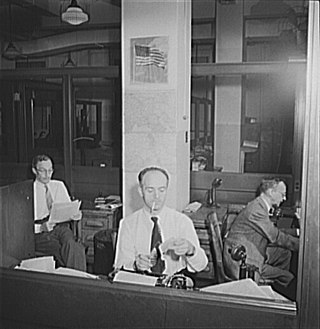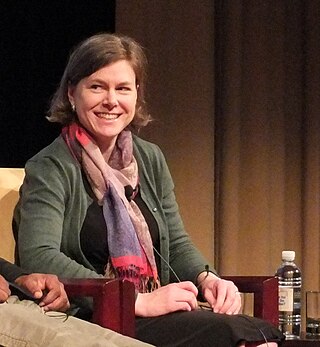
A comic strip is a sequence of cartoons, arranged in interrelated panels to display brief humor or form a narrative, often serialized, with text in balloons and captions. Traditionally, throughout the 20th and into the 21st century, these have been published in newspapers and magazines, with daily horizontal strips printed in black-and-white in newspapers, while Sunday papers offered longer sequences in special color comics sections. With the advent of the internet, online comic strips began to appear as webcomics.

A cartoon is a type of visual art that is typically drawn, frequently animated, in an unrealistic or semi-realistic style. The specific meaning has evolved, but the modern usage usually refers to either: an image or series of images intended for satire, caricature, or humor; or a motion picture that relies on a sequence of illustrations for its animation. Someone who creates cartoons in the first sense is called a cartoonist, and in the second sense they are usually called an animator.

A political cartoon, also known as an editorial cartoon, is a cartoon graphic with caricatures of public figures, expressing the artist's opinion. An artist who writes and draws such images is known as an editorial cartoonist. They typically combine artistic skill, hyperbole and satire in order to either question authority or draw attention to corruption, political violence and other social ills.

Ruben Bolling is a pseudonym for Ken Fisher, an American cartoonist, the author of Tom the Dancing Bug. His work started out apolitical, instead featuring absurdist humor, parodying comic strip conventions, or critiquing celebrity culture. He came to increasingly satirize conservative politics after the September 11 attacks and Iraq war in the early 2000s. This trend strengthened with the Donald Trump presidency and right-wing populism from 2017-2020, his critiques of which earned him several cartooning awards.

Print syndication distributes news articles, columns, political cartoons, comic strips and other features to newspapers, magazines and websites. The syndicates offer reprint rights and grant permissions to other parties for republishing content of which they own and/or represent copyrights. Other terms for the service include a newspaper syndicate, a press syndicate, and a feature syndicate.

The Pulitzer Prize for Illustrated Reporting and Commentary is one of the fourteen Pulitzer Prizes that is annually awarded for journalism in the United States. It is the successor to the Pulitzer Prize for Editorial Cartooning awarded from 1922 to 2021.

Jen Sorensen is an American cartoonist and illustrator who creates a weekly comic strip that often focuses on current events from a liberal perspective. Her work has appeared on the websites Daily Kos, Splinter, The Nib, Politico, AlterNet, and Truthout; and has appeared in Ms. Magazine, The Progressive, and The Nation. It also appears in over 20 alternative newsweeklies throughout America. In 2014 she became the first woman to win the Herblock Prize, and in 2017 she was named a Pulitzer Finalist in Editorial Cartooning.
Notable events of 1935 in comics.
Jimmy Johnson is an American comic strip cartoonist who writes and draws Arlo and Janis.
David Gantz was an American artist and sculptor who illustrated children's books and worked as a newspaper cartoonist.
Bill Schorr is an American cartoonist of syndicated editorial cartoons and comic strips.

Bill Day is an American cartoonist best known for his syndicated editorial cartoons. Day has won numerous industry awards and also has drawn criticism over his reuse of his own previously drawn material as well as over his opposition to the National Rifle Association of America and his advocacy of gun control.

Daryl Cagle is an American editorial cartoonist, the publisher of Cagle.com and owner of Cagle Cartoons, Inc., a newspaper syndicate.

Kurt Westergaard was a Danish cartoonist. In 2005 he drew a cartoon of the Islamic prophet Muhammad, wearing a bomb in his turban as a part of the Jyllands-Posten Muhammad cartoons, which triggered several assassinations and murders committed by Muslim extremists around the world, diplomatic conflicts, and state-organized riots and attacks on Western embassies with several dead in Muslim countries. After the drawing of the cartoon, Westergaard received numerous death threats and was a target of assassination attempts. As a result, he was under constant police protection.
Darrin Lawrence Bell is a Pulitzer Prize-winning American editorial cartoonist and comic strip creator known for the syndicated satirical comic strips Candorville and Rudy Park. He is a syndicated editorial cartoonist with King Features.

Comics journalism is a form of journalism that covers news or nonfiction events using the framework of comics, a combination of words and drawn images. Typically, sources are actual people featured in each story, and word balloons are actual quotes. The term "comics journalism" was coined by one of its most notable practitioners, Joe Sacco. Other terms for the practice include "graphic journalism," "comic strip journalism", "cartoon journalism", "cartoon reporting", "comics reportage", "journalistic comics", "sequential reportage," and "sketchbook reports".
Atena Farghadani is an Iranian artist and political activist, who was imprisoned for 18 months. Amnesty International considers her a prisoner of conscience. She was released on 3 May 2016.
Cagle Cartoons, Inc. is a syndication service for political cartoons and opinion columnists. Started by editorial cartoonist Daryl Cagle in 2001, Cagle Cartoons distributes the cartoons of sixty cartoonists and fourteen columnists to more than 850 subscribing newspapers in the United States and around the world, including over half of America's daily, paid-circulation newspapers.
Kevin Siers is an American editorial cartoonist formerly working for The Charlotte Observer and is syndicated by Cagle Cartoons. He was awarded the 2014 Pulitzer Prize for Editorial Cartooning.











